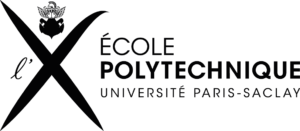Many congratulations to Charles Baroud for being awarded a prestigious ERC Advanced grant for his project “MELCART“
“Engineering soft microdevices for the mechanical characterization and stimulation of microtissues“
Abstract: As living beings move, touch, or grow, the tissues within them are subject to mechanical stresses that act over minutes, hours, or days. These efforts play a critical role at all stages of life, from early embryonic development to homeostasis in adult tissues or disease progression. Mechanobiology has emerged in response to this realization and has led to many discoveries on mechanosensitive pathways in individual cells. However we are still very far from relating the single-cell behavior to the response within a real tissue that contains mixtures of cell types which are organized in complex 3D structures. In this project we will expand mechanobiology to 3D tissues by developing a new class of micro-devices, based on soft robotics and metamaterials, for active mechanical forcing of spheroids and organoids. We will couple this active forcing with multiscale cytometry methods that we have pioneered, in addition to concepts from many-body soft matter physics. This will allow us to understand how the rheological responses of individual cells add up to result in the global tissue rheology. The outcome is a new paradigm to probe phenotypic changes, e.g. the epithelialmesenchymal transition in a cancer model or the cellular differentiation and 3D organization in a maturing organoid. Conversely we will map how global mechanical stresses are transferred to individual cells that in turn respond to the forces locally. This will allow us to engineer dynamical forcing strategies to guide the biological response of specific populations within a complex co-culture. When applied to developing organoids this will lead to strategies to mature individual cell types, in view of using them for cell therapy. In the case of cancer models we will identify mechanosensitive pathways that can be targeted by drugs to treat real tumors. By working on the joint cutting edge of technology, physics, and biology, we will manipulate in vitro models with real impact on human health.




